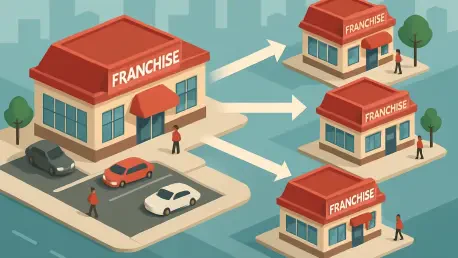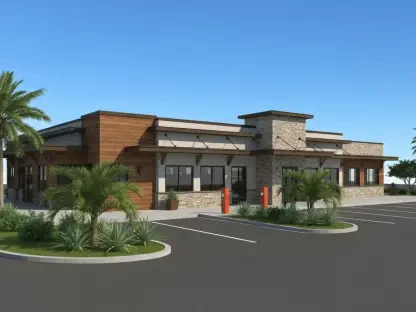Today, we’re thrilled to sit down with Katarina Railko, our esteemed hospitality expert, to dive into the exciting world of restaurant industry growth and franchise development. With her extensive background in travel and tourism, as well as her deep insights into entertainment and events, Katarina brings a unique perspective on how brands like Rita’s Italian Ice & Frozen Custard are navigating expansion, innovation, and industry recognition. In this conversation, we’ll explore the strategies behind opening new locations, adapting to market trends with creative real estate solutions, supporting franchisees in a challenging economic climate, and leveraging leadership to drive meaningful guest experiences. Let’s get started!
How do you see a brand like Rita’s balancing ambitious expansion goals, such as nearly 40 new locations in 2025, with maintaining quality and consistency across all shops?
Balancing growth with quality is a critical challenge for any franchise, and for a brand like Rita’s, it starts with a strong foundation of operational systems and brand standards. With nearly 40 new locations planned for 2025, the focus would likely be on robust training programs for franchisees and staff to ensure that every shop delivers the same signature experience—whether it’s the taste of their Italian Ice or the welcoming vibe. I’d also imagine they’re prioritizing strategic site selection to avoid oversaturation, ensuring each new market has the demand to support a location. It’s about growing smart, not just fast, and leveraging data to predict where their customer base will thrive.
What factors do you think play a role in choosing new markets for expansion, such as smaller or emerging areas like Grand Rapids, Michigan, or Nexton, South Carolina?
Choosing new markets is often a mix of demographic research, economic trends, and cultural fit. For a brand like Rita’s, I believe they’d look at areas with a strong family-oriented community since their products appeal to all ages and evoke a sense of nostalgia. Places like Grand Rapids or Nexton likely show growing populations, disposable income levels that align with discretionary spending on treats, and a lack of direct competitors in the frozen dessert space. Climate might also play a role—warmer regions or areas with distinct seasons could drive seasonal demand. It’s about finding untapped potential where the brand can become a local favorite.
With rapid growth, including 16 new shops already opened this year, what are some of the biggest hurdles in getting new locations operational?
Opening 16 shops in a short timeframe is no small feat, and the hurdles often revolve around logistics and timing. Securing permits and navigating local regulations can delay construction, especially in new markets where the brand might not have established relationships. Then there’s the challenge of hiring and training staff quickly without compromising on service quality. Supply chain issues could also pop up—ensuring consistent delivery of ingredients to new locations is critical for a product-driven brand like Rita’s. I’d guess they’ve had to build a strong support network at the corporate level to troubleshoot these issues in real time.
How can innovative real estate strategies, like reusing second-generation spaces such as old banks or dry cleaners, benefit franchisees and accelerate growth?
Reusing second-generation real estate is a brilliant move for keeping costs down and speeding up openings. For franchisees, converting spaces like old banks or dry cleaners means lower build-out expenses since the basic infrastructure—plumbing, electrical, sometimes even parking—is already in place. This reduces the financial risk for new operators, especially in an industry with tight margins. It also accelerates growth because these spaces can often be repurposed faster than building from scratch. Plus, these locations are typically in established areas with built-in foot traffic, which is a win for visibility. It’s a practical way to make expansion more accessible and sustainable.
What’s your take on the potential of transforming vacant coffee shop spaces into new locations for frozen treat brands like Rita’s?
Vacant coffee shop spaces are a goldmine right now for brands like Rita’s. These spots are often in prime retail areas with high visibility, and they’re already zoned for food service, which cuts through a lot of red tape. The layout of a coffee shop—counter space, seating areas, sometimes even drive-thru windows—can be adapted relatively easily for a quick-service concept like Italian Ice and Frozen Custard. With the shift in consumer habits post-pandemic, where some coffee chains have closed underperforming locations, there’s a surplus of these spaces. It’s an opportunity to move into turnkey locations at a lower cost, especially in markets where real estate is otherwise pricey.
Can you explain the appeal of new freestanding drive-thru models for both customers and operators in today’s market?
Freestanding drive-thru models are a game-changer because they cater to the modern demand for convenience. For customers, it’s all about speed and ease—grabbing a treat without leaving the car is perfect for busy families or on-the-go lifestyles. For operators, drive-thrus can boost sales volume since they handle more transactions per hour compared to walk-in only shops. They also open up location options in suburban or highway-adjacent areas where parking might be limited. While the upfront investment might be higher, the return in terms of customer reach and operational efficiency often justifies it. It’s a format that aligns with how people live today.
How can a brand ensure it remains a smart investment for franchisees when industry costs are on the rise?
Rising costs are a reality across the board, so brands need to focus on reducing barriers to entry and maximizing ROI for franchisees. This could mean offering flexible shop formats to lower initial investment, as we’ve seen with smaller footprints or adaptive reuse strategies. Providing comprehensive support—like bulk purchasing agreements to cut supply costs or tech tools for efficient operations—also helps. I think it’s crucial to be transparent about financial projections and to offer ongoing training to help franchisees optimize their business. Building a community among franchisees to share best practices can also keep everyone ahead of the curve despite economic pressures.
What role does third-party delivery play in helping franchisees meet evolving customer expectations?
Third-party delivery has become a lifeline for many franchisees, especially in the quick-service space. It meets customers where they are—whether they’re at home, at work, or just not in the mood to go out. For a brand like Rita’s, delivery extends their reach beyond the physical shop, tapping into a broader audience who might not have visited otherwise. It also helps smooth out sales during slower in-store hours by capturing impulse orders. The key is integrating delivery seamlessly so it doesn’t disrupt operations—think dedicated pick-up areas or streamlined order systems. It’s a powerful way to boost revenue without needing to expand the physical footprint.
How can fresh leadership perspectives drive innovation and growth for an established brand in the frozen treat industry?
New leadership often brings a fresh lens to longstanding challenges, which is vital for an established brand to stay relevant. Leaders with diverse backgrounds can introduce innovative marketing strategies, like leveraging data to personalize customer experiences, or operational tweaks that improve efficiency. They might push for bolder community engagement or partnerships that elevate brand visibility. For a frozen treat brand, this could mean exploring new product lines, enhancing digital ordering platforms, or rethinking how to create memorable guest moments. It’s about blending the brand’s legacy with forward-thinking ideas to keep both franchisees and customers excited.
What’s your forecast for the future of franchise growth in the quick-service dessert sector over the next few years?
I’m optimistic about the quick-service dessert sector, as it taps into a universal desire for small, affordable indulgences—especially in uncertain economic times when people seek out simple joys. I think we’ll see continued growth, driven by brands that can adapt to changing consumer habits, like prioritizing convenience through drive-thrus and delivery. There’s also a huge opportunity in emerging markets and smaller towns where competition is lower, and community connection is high. The challenge will be balancing innovation with authenticity—customers want new experiences but still crave the nostalgia these brands often represent. I expect we’ll see more creative real estate solutions and tech integration to keep growth sustainable and profitable for franchisees.









